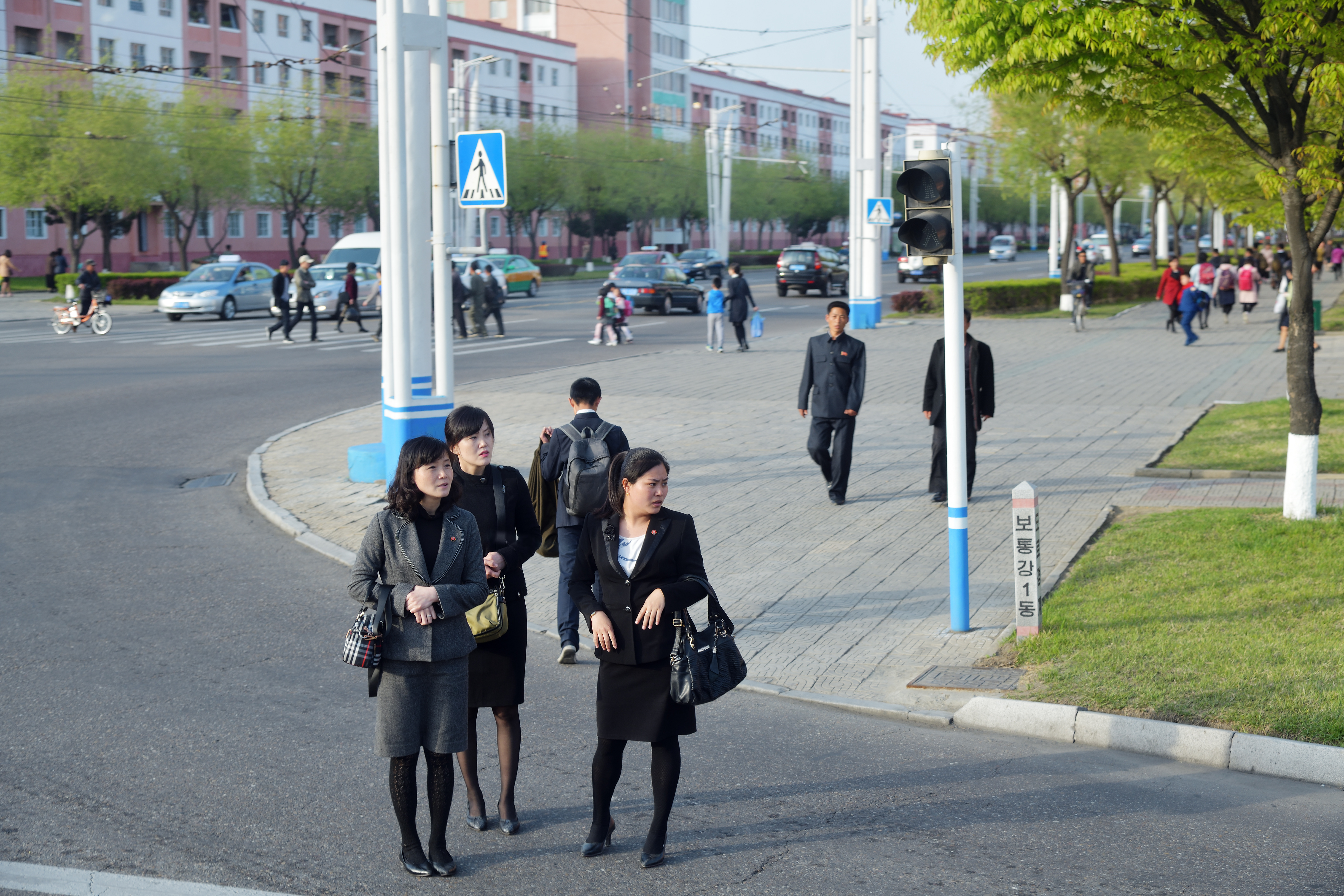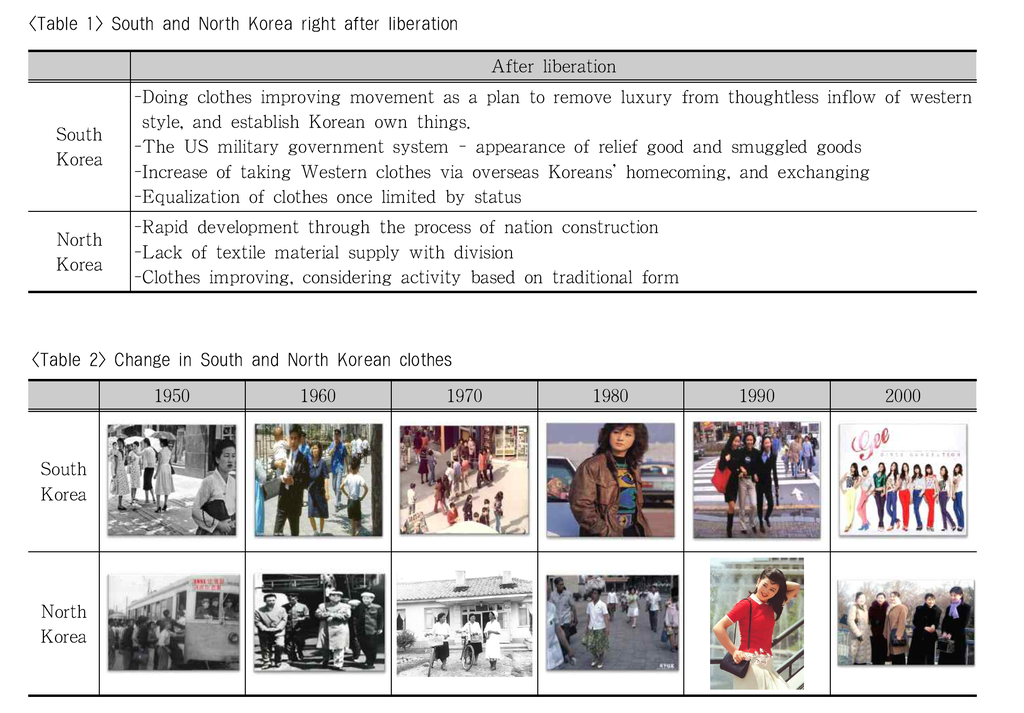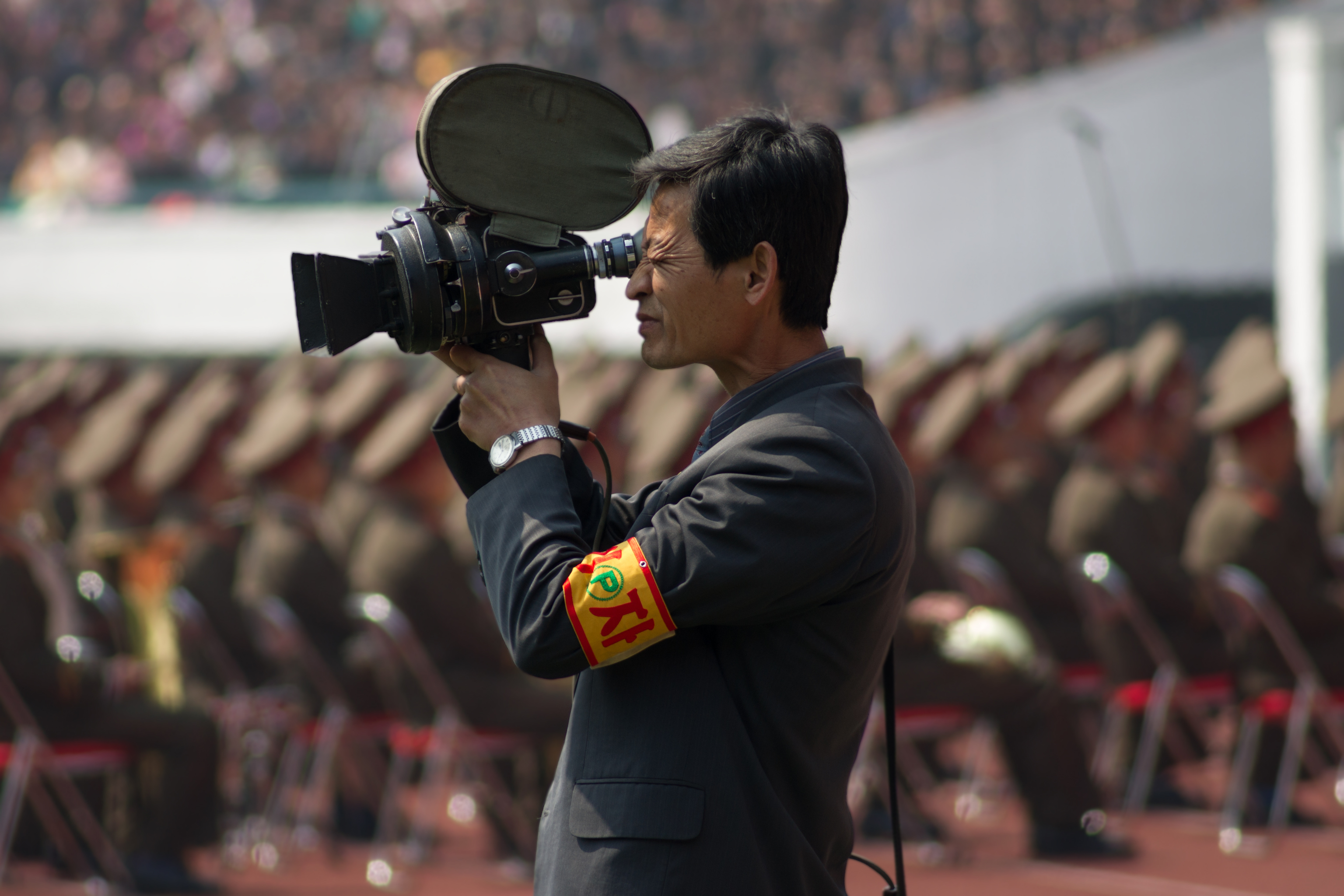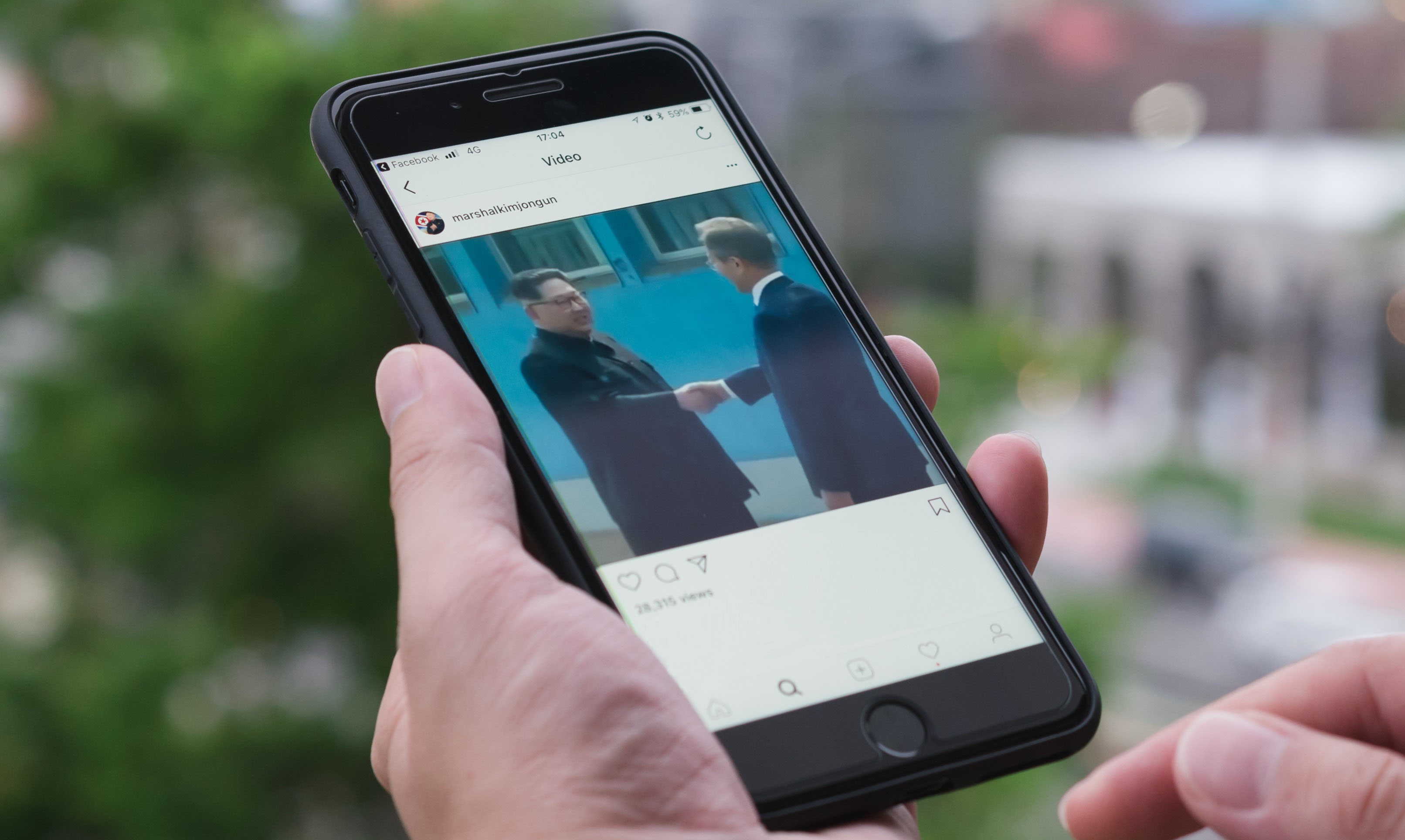
Changes in the Clothing Culture of North Korea under the Kim Jong Un Regime
Research Reviews | November 17, 2021
Hyun-Sook Choy
Honorary Professor, Former Dean of the Graduate School of Fashion at Dongduk Women’s University
Street snaps of the streets of Seoul and Pyongyang show that clothing styles among South Koreans and North Koreans are drastically different. In this Research Review, Hyun-Sook Choy, Honorary Professor and Former Dean of the Graduate School of Fashion at Dongduk Women’s University explains the trajectory in which fashion in North Korea has changed. While the concept of fashion was largely absent due to the distribution of “uniforms” by the authorities prior to the mid-1980s, fashion in North Korea a substantial concept following the period. Wider and more diverse channels of clothing distribution marked a change in the history of North Korean fashion. This Research Review provides a broader perspective on the trend of fashion by taking into account the Kim Jong Un regime, for research related to North Korean clothing culture, which has been extremely understudied.
Introduction
Since the Korean War Armistice in 1953, there have been restrictions in visits and exchanges among the two Koreas. As a result, South Korea, with its liberal democracy, and North Korea, with its closed regime, have had limited contact with each other in social, economic, and cultural terms; this has only caused more divergence. The two Koreas have also experienced a widening divide in clothing and fashion, a visual measure that reflects society and culture. In North Korea, the Great Leader’s instructions have had absolute authority on clothing styles. In a totalitarian society, it was difficult to find diversity in clothing, as the clothes supplied by the authorities were essentially uniforms.
However, after the mid-1980s, North Koreans' attire began to gradually change in color and shape. After the 1990s, during a time in which there was a disruption in clothing supply, the change started in earnest and continued until 2000. The distribution of clothing through the market provided the North Korean clothing culture with diversity, which became a channel for introducing other foreign products from China and Japan. In particular, with the inauguration of the Kim Jong Un regime in April 2012, North Korea has been showing signs of change by shifting its policy focus to economic construction through reform and opening-up in addition to power transfer. The First Lady Ri Sol Ju officially appeared in July 2012 with unconventional fashion and became the center of change due to her great popularity. These changes in North Korean clothing culture can be seen as a reflection of social, economic, and cultural phenomena as well as policies of the authorities.
The purpose of this study is to confirm the changes that have occurred in North Korean clothing culture under the Kim Jong Un regime. As related domestic and international studies are extremely limited, the study has become increasingly important and necessary as it can serve as a cornerstone of cultural studies for a unified Korea in the future. This study is also significant in that it considers the new variable of the Kim Jong Un regime in clothing research to examine the changing trends and offer a broader perspective on North Korean society.
For this study, a literature review and empirical research were used. For the literature review, previous research and theories in Korean and foreign books and papers on research related to North Korea were examined and considered. For the empirical research, the trend of change was examined using 1,100 photos and press releases collected from official organizations including Hanawon (the settlement support center for North Korean defectors), interviews with North Korean defectors of various classes, photos, TV video materials, newspapers, and the Internet. The collection of photographic data was roughly divided into two periods: the period from liberation to the pre-inauguration of the Kim Jong Un regime and the period after the inauguration. The post-inauguration period was defined as April 2012 to May 2016, and the collected data were classified by period and categorized by keywords. Images representative of each keyword group were selected by a panel consisting of five master's and doctoral students in clothing science. Although no spatial restrictions were placed on the scope of this study, most of the collected data appeared to be from North Korea’s capital, Pyongyang, and other cities.
Theoretical Background
1. South and North Korean Clothing after Liberation
After liberation from Japanese colonial forces in 1945 and the Korean War in 1950, the Korean Peninsula was divided into North and South and has remained divided to this day. In South Korea, relief goods from the U.S. military government system and smuggled goods were introduced, and Western-style clothes became popular due to the return of overseas Koreans and international exchanges. In particular, clothing, which was previously restricted by social status, was worn without restrictions pertaining to class. In addition, to cope with the reckless influx of Western styles, the [traditional] clothing improvement [modernization] movement was carried out as a measure to restrain luxury and establish Korea’s own clothing style. After liberation, North Korea achieved rapid development through the process of national construction, but it experienced a disruption in the supply of raw textile materials. In the North, the clothing improvement movement was carried out to better the convenience of the traditional costume. Immediately following liberation, there was no significant difference in clothing between the two Koreas. However, as time passed, it began to change, and the gap became larger. The social changes in South and North Korea immediately after liberation are summarized in
; the main changes in clothing from the 1950s to the 2000s are summarized in.

2. Changes in North Korean Clothing Culture
If we look at the changes in North Korean clothing, we can find distinctive styles for each period, with there being five periods total.
The 1950s and 1960s were a time when North Koreans usually wore two types of clothing—inminbok (similar to the Mao suit) and hanbok (a traditional Korean outfit). The men mostly wore work uniforms or khaki-colored suits. As part of the repatriation project of Koreans in Japan, men's business attire was introduced for some high-ranking officials. During this period, the women generally wore Joseon clothes or hanbok consisting of a long black skirt and a white jeogori (a shirt or a jacket) or [loose-fitting] working pants. Upper-class women wore hanbok made of rayon, and working pants were banned after the Mother’s Convention in 1961. In the 1970s, North Koreans wore both inminbok and Western-style suits. In October 1978, the first fashion show—“Clothes Exhibition” (literal translation) —was held in Pyongyang. In April 1979, under Kim Il Sung's order on colored attire, North Korean residents in large cities started to wear Western-style clothes and outfits with various shapes, splendid colors, and patterns. In the 1980s, Western-style suits became a staple in North Korea. After Kim Jong Il succeeded his father in 1984, he instructed fabric makers to produce high-quality fabrics. After Kim Il Sung’s visit to the Eastern Bloc in May of the same year, the regime required men to wear a formal suit and tie when attending important events. For the women, hanbok became the official attire for ceremonies, and Western-style dresses became ordinary [everyday] wear. In 1982, after Kim Il Sung's decision to allow exposure in women's clothing, sleeveless and low-neckline clothes were introduced. In addition, in September 1984, the Equity Joint Venture Law was enacted; in February 1986, Kim Jong Il ordered women not to wear trousers or khaki (often called “military color” in Korea) or black clothes; in February 1988, the light industry exhibition center opened, which displayed clothes including knitwear, footwear products, and cloth patterns. In 1989, for the 13th World Festival of Youth and Students, there was a campaign for neat and tidy clothes and hairstyles, and fashion articles began to appear in the newspapers and media of the Party. The 1990s was characterized by the full-blown introduction of new and various fashion styles introduced through the market. However, the national supply system for clothing was disrupted due to severe economic hardship. North Korean residents bypassed this problem by directly buying clothes through the market. This led to more diverse fashion in the North than ever. Short-sleeved T-shirts and shorts appeared in the summer of 1990 and a fashion design contest was held in Wonsan, Gangwon-do Province in 1992. A fashion photo book titled Otcharim (Attire) that contained basic patterns was published and the Pyongyang Clothing Research Institute held regular spring and autumn fashion exhibitions and Pyongyang clothing exhibitions. In addition, through various publications such as Chollima and Labor Youth, clothing patterns and production methods by gender, age, and class were introduced. With the influx of Western fashion, jeans, leggings, culottes, and mini-skirts gained popularity, mainly among young people, and outfits with English letters and pictures were also circulated. In June 1994, the Joseon Fashion Show was aired on the state-run Korean Central TV, and articles on hairstyles and makeup were published in governmental newspapers and media.
The period of the 2000s was characterized by the growth of the fashion industry. In 2001, a leading South Korean hanbok designer, Lee Young-hee, visited Pyongyang and held a fashion show there. Since 2002, North Korea has also held a fashion show in Pyongyang every spring. During this period, accessories like earrings also became increasingly popular, and in 2008, “slim look (slim fit)” business suits became popular among men. The changes by period show that although fashion trends are influenced by the social structure, they also reflect the aesthetic desires of individuals within the society.
Changes in North Korean Clothing Culture under the Kim Jong Un Regime
1. The Advent of the Royal Family and Changes in Clothing Culture
In July 2012, a woman accompanying Kim Jong Un made headlines when her photo was released to the media. On July 25, 20 days after, though there were no further explanations on her identity, the media mentioned her real name by using the expression “comrade Ri Sol Ju,” the wife of First Chairman Kim Jong Un. The unusual appearance of Ri heralded the new role of the first lady in the Kim Jong Un regime. North Koreans had a good impression from the neat and dignified appearance of Ri Sol Ju, and this favorable public image seems to have had a positive effect on Kim’s regime as well.
Due to her frequent appearances, which seem politically intended, North Koreans have also been very interested in her style and even imitated her fashion. The first lady wearing trousers at an official event also drew attention. This gave an opportunity to informally allow women to wear trousers, which had been subject to strict crackdowns in the past but no actual crackdowns since 2009. This also contributed to garnering support from young women. Her official appearance brought about a “wind of fashion freedom,” giving a fresh shock to the conservative North Korean society. A short skirt that fits her body, a top with low-neckline, a clutch bag, a hairstyle, and a brooch instead of a double-portrait badge of their leaders can be said to be the hallmarks of her fashion. Most images of Ri Sol Ju in the media depict her holding a Christian Dior clutch. It has been analyzed that she holds the same clutch repeatedly to prevent backlash against the North Korean regime’s blocking of the consumption of luxury goods. Her fashion has been coveted and copied by North Korean women and has signaled a turning point in North Korean fashion history. As more and more women prefer high heels, even female soldiers in their military uniforms are wearing high heels. Kim Jong Un's hairstyle has also been called a “mettle haircut” and has increased in popularity among North Korean men. With the inauguration of the Kim Jong Un regime, Ri’s moves seem to be based on highly calculated image politics. The image of a family man serves as an opportunity to cease anxiety regarding the young leader and to help Kim be reborn as a friendly leader.
2. Trade Increase and the Impact of the Korean Wave
Since the inauguration of the regime, North Korea has devoted all its power to domestic and international activities for economic development. The state has started to allow the market and deregulation to foster economic growth. The North has also been active in attracting foreign investment and promoting trade. According to the report of the UN Commission of Inquiry for Human Rights in North Korea, it is estimated that 80,000 workers have been sent to 16 countries, including Russia, China, and Southeast Asia, to earn hard currency. These activities serve as a channel for the introduction of foreign culture. In fact, cultural content, such as Chinese and South Korean dramas and movies, is spreading throughout areas bordered with China. The Moranbong Band, which was founded under the direction of Kim Jong Un with the inauguration of his regime in 2012, is regarded as a strategy to stabilize the system and respond to the influx of foreign culture. However, there is also a contradiction that this band imitates the fashion of South Korean girl bands. With the popularity of the Moranbong Band, short and dyed hair has become popular among the public, and plastic surgery has increased significantly. With the activation of this market, overall fashion and style have become fancy under the influence of imported Chinese clothing. As South Korean style becomes more popular, the popularity of second-hand clothing from South Korea has also increased. However, North Korean authorities have banned the purchasing of South Korean products in the market. Therefore, some North Koreans have been reading South Korean magazines to make their own clothes. The influence of Hallyu, or the Korean Wave, which has been introduced to North Korea through various channels, including CDs and broadcasts made in China and South Korea, has contributed greatly to the rapid change in North Korean fashion.
3. Creation of Pyongyang Style through People-friendly Policies and Market Revitalization
As North Korea went through severe economic difficulties in the 1990s, the national supply system was interrupted, and a market called Jangmadang (Korean for “market grounds”) emerged as an alternative. The market has been expanded and activated under the people-friendly policy of the Kim Jong Un regime. As of 2015, about 400 markets are under stable operation. A market economy that is different from the existing centrally-controlled socialist economic system may pose a threat to the regime, but it is still helping the national finance system within a controllable range. Direct purchases through the market have also changed the lives of North Koreans, particularly their fashion. One of the noticeable changes is diversity. This is because instead of being provided with state-distributed clothes, people can buy diverse products including colorful clothes of various designs in the market. Even imitations of luxury fashion brands are easily found in the market. A limited-edition Rolex watch priced over $10,000 is also being sold on Buksae Street in the Moranbong District, a high-end shopping district in Pyongyang. The relatively free supply through the market created a variety of styles in North Korean fashion. Particularly, Pyongyang's fashion, which spearheads living standards and fashion, is called 'Pyongyang Style.'
In addition, North Korea has allowed 18 hairstyles; however, at the high-end beauty salon at Changgwangwon Bathhouse in Pyongyang, more diverse hairstyle samples are presented. Although clothing is not completely free under the current system, new attempts are being made in line with social and cultural changes.
Conclusion
Under Kim Jong Un, who has built an image of a young leader and taken unconventional political moves, North Korea has undergone social, cultural, political, and economic changes, which brought about the following changes in clothing culture. First, with the advent of First Lady Ri Sol Ju, women’s attire became free; the ‘Ri Sol Ju style’ gained great popularity among women and played a positive role in forming a friendly image of her husband, Kim Jong Un. Second, the Korean Wave spread in North Korea through various channels, through which South Korean fashion became popular. Third, as the market expanded as part of the economic revitalization policy, various styles of fashion were introduced. Fourth, there were Kim Jong Un's direct instructions on clothing and fashion; as a result, stewardesses started wearing stylish uniforms and luxury cosmetics were developed.
It is hard to interpret that all these changes in clothing are directly connected to the Kim Jong Un regime because not all changes have proceeded in the direction the regime intended. Although the regime has repeatedly tightened and relaxed regulations on clothing for its political purposes, the intrinsic power of fashion, a form of sensuous culture, somewhat goes beyond systematic control as shown in this study. For example, the increase in trade with China caused an inflow of South Korean culture across borders, leading to an unexpected Korean Wave of fashion in North Korea. Even though people who are caught with South Korean media contents may face the death penalty by the firing squad, the regime seems to fail in preventing their spread. The deviations detected in clothing are not yet threatening to the existence of the regime and it is assessed that the authorities have adjusted the related regulations by taking the circumstance into consideration. This study is significant in that it provides a broader perspective on the trend by considering a new variable, the Kim Jong Un regime, for research related to North Korean clothing culture, which has been extremely understudied.■
■ Hyun-Sook Choy is an honorary professor, former dean of the Graduate School of Fashion at Dongduk Women’s University. Previously, she taught at the Hong Kong Polytechnic University as a visiting professor and was a full time instructor at Chung Ang University. She has worked as a designer in Seoul and Los Angeles and has held three solo exhibitions and over 60 group exhibitions in Korea and abroad. She has over 50 published papers in academic journals. She is also the President at the Korea Fashion & Culture Association, the Director of the Korean Costume Association, Korea Society of Clothing & Textiles, and Korea Fiber Society, a committee member at the Ministry of Commerce, Industry and Energy, and an advisor to the Korea Fashion Association. She received her Ph.D., M.A, and B.A. from Seoul National University, and her A.A. at the Fashion Institute of Design & Merchandising in the U.S.
■ Typeset by Seung Yeon Lee | Research Associate
For inquiries: 02 2277 1683 (ext. 205) | slee@eai.or.kr
North Korean fashion

Why is the Opening of All Material on North Korea's Culture and Arts Feared?
Jae-beom Hong | November 12, 2021

Getting the Price Right: The End of the War Declaration and North Korea’s Missile Tests
Youngshik Bong | November 02, 2021
LIST